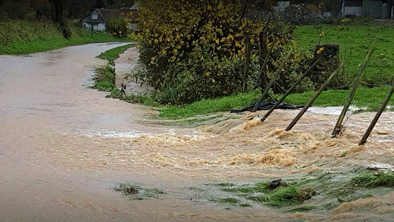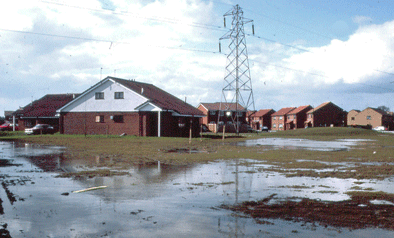Storm Angus Hits England & France Bringing Soil Management Into Sharp Focus
The flooding that recently affected the south of England and Northern France in the wake of Storm Angus was exacerbated in many areas causing a rapid run-off from structurally-degraded soils.
Three important properties determine the severity of soil erosion to farmers and the environment when flooding occurs:
1. The ability of a soil profile to let rainfall infiltrate into the soil surface
2. The volume of water that the soil profile can absorb before it becomes saturated
3. The speed at which water percolates through the soil voids and matrix towards groundwater or surface water courses
The importance of soil management is crucial as poor land management practices can cause considerable harm to the soil’s ability to absorb rainfall. Continuous arable cropping of agricultural land results in a reduction in soil organic matter and deterioration in the structure that helps to keep soil pores and voids open. Reduced infiltration also results from soil becoming over-compacted by ill-timed cultivation or harvesting.
During intense rainfall events the surface soon becomes saturated and the resultant runoff rapidly transports muddy water downslope and can erode permanent gullies. Receiving ditches and streams soon reach capacity and overflow onto roads (see image below) and into properties, with significant damage caused both by floodwater and by residual sediment left behind after the waters recede.

Much larger impacts on the land’s natural ability to absorb rainfall can occur as a result of construction development of greenfield sites. Stripping and stockpiling of topsoil is often one of the first operations on site, usually carried out by heavy machinery and often at wet times of the year when soils are soft and most vulnerable to damage.
The stripped subsoil surface is then regularly travelled over by construction machinery and becomes heavily compacted and impermeable, properties that usually persist after parts of the site are reinstated as landscaping (see image below) or residential gardens. This can cause significant increases in runoff percentage and means SUDS capacity (based on the drainage properties of undamaged natural soil) is insufficient. While common on UK construction sites, this problem is entirely avoidable with good use of soil management strategies.

We offer comprehensive Soil Quality Assessments of Agricultural Land and Soil Resource Plans and Soil Plans for Development Sites. Working with our associates Envireau Water, the findings can be interpreted to provide detailed information on the potential for surface water storage and infiltration within different areas of a site; to improve runoff and flood risk assessments and to maximise the value of the site layout.
For more information phone us on +44 (0)1509 670570 or email mike.palmer@lra.co.uk.

